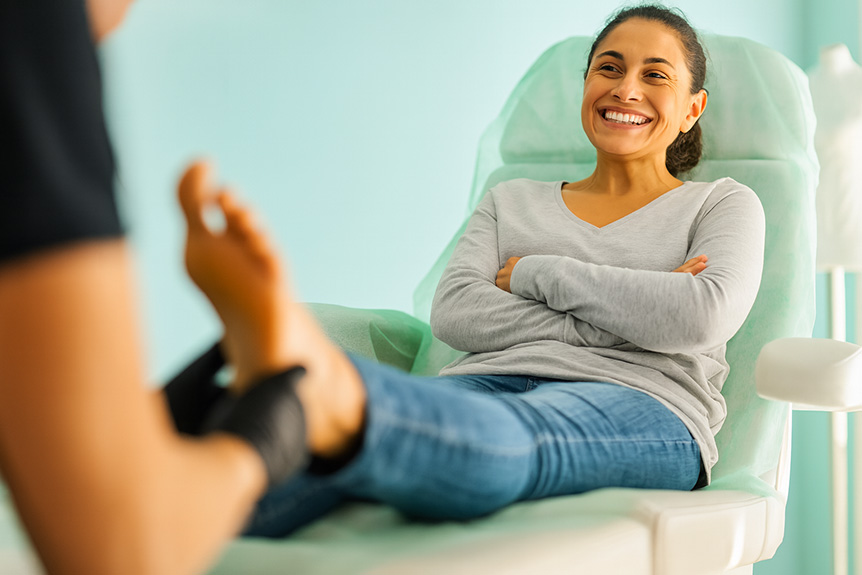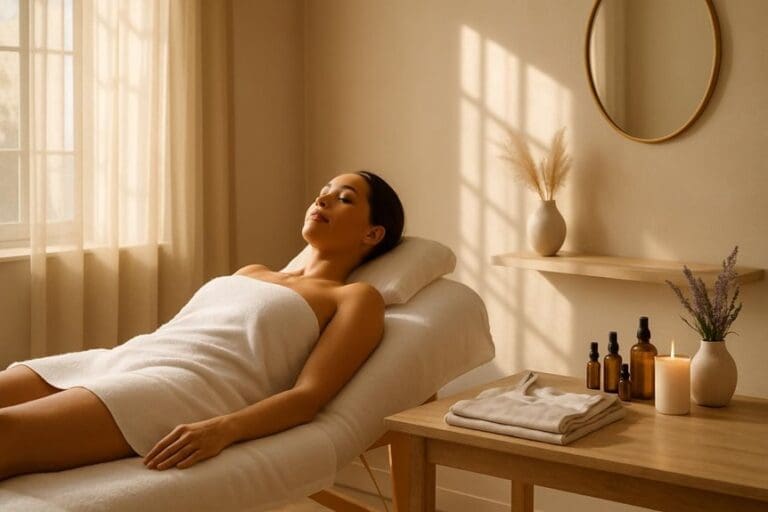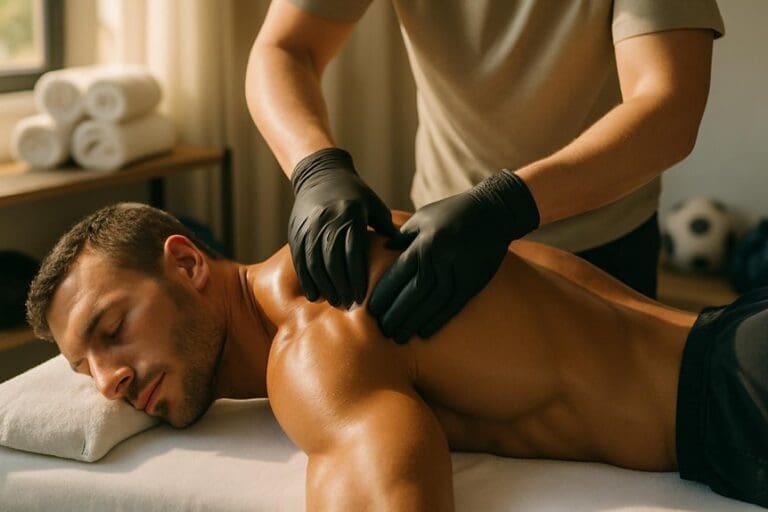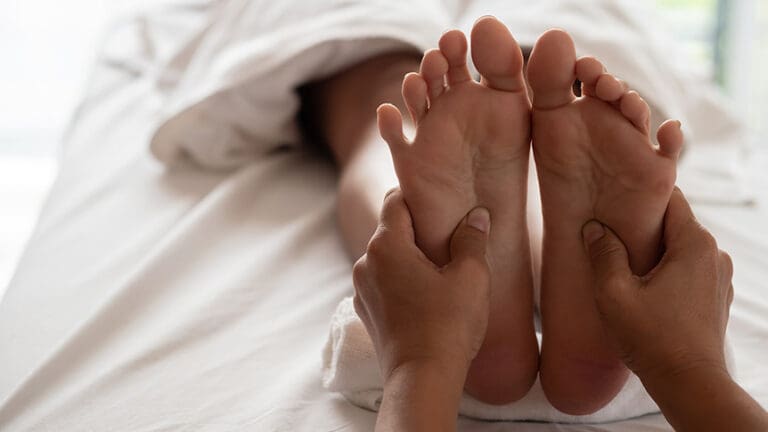It is a complementary therapy based on the theory that specific points on the feet, hands, or ears correlate with body systems. Scientific evidence offers mixed conclusions; while some research highlights relaxation and stress reduction, mechanisms remain under investigation. Many clients report subjective benefits, such as enhanced well-being and reduced tension. Although definitive physiological explanations are lacking, ongoing studies explore nerve stimulation and circulation theories. Further detailed exploration provides greater insight into its methods and effectiveness.
Understanding the Principles
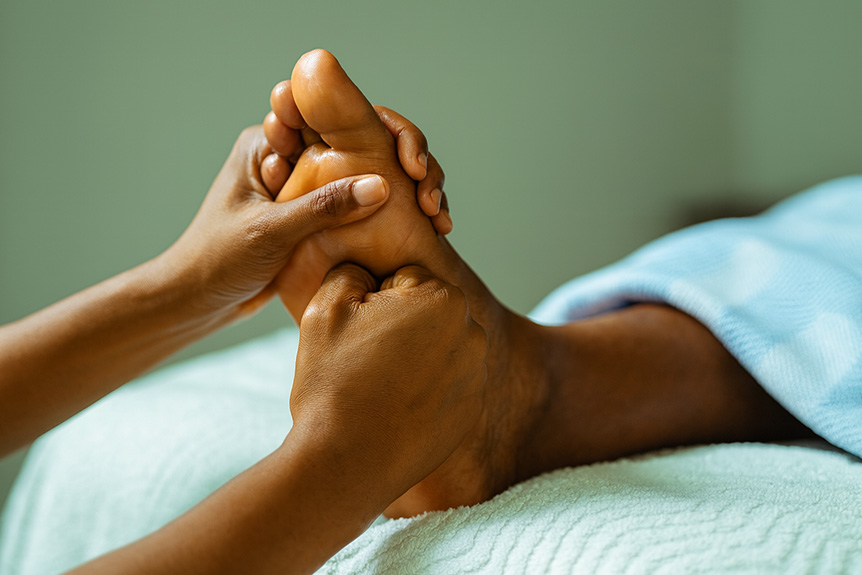
How does this operate within the wider context of complementary therapies? Reflexology is predicated on the concept that specific zones on the feet, hands, and ears correspond to organs and systems throughout the body. By applying targeted manual pressure to these reflex points, practitioners aim to promote homeostasis, encourage relaxation, and facilitate physiological balance. Clinical studies yield mixed results regarding its efficacy, yet many individuals report subjective improvements in wellbeing and stress reduction. It does not claim to diagnose or cure underlying pathologies, but rather to complement conventional healthcare by supporting the body’s intrinsic healing mechanisms. Within the therapeutic framework at Spa & Massage, this is recognized as a nuanced modality, integrating evidence-informed touch with a commitment to individualized care and holistic wellness, guided by professional standards and client-centered values. Some individuals turn to this treatment to discover the healing power of it as part of a broader approach to mind-body wellness.
How It Is Practiced at Spa & Massage
At Spa & Massage, it is administered by qualified therapists who employ a systematic approach grounded in anatomical knowledge and best practices within complementary therapy. Each session begins with a brief consultation to assess the client’s medical history and wellness objectives. Therapists then apply targeted pressure to specific reflex points on the feet, hands, or ears, using calibrated thumb and finger techniques designed to stimulate neural pathways and promote systemic relaxation. The environment is intentionally tranquil, enhancing the parasympathetic response and fostering a sense of safety and connection. Therapists monitor client feedback throughout the session, modifying pressure and technique to individual tolerance levels. Aftercare advice is provided, including hydration and gentle movement, to support ongoing well-being and maximize the therapeutic benefits experienced during a session at Spa & Massage.
Scientific Perspectives
Scientific investigation into this treatment has produced mixed results, with some studies indicating potential benefits for relaxation and symptom management, while others find limited evidence for specific therapeutic effects. Proposed mechanisms include stimulation of nerve pathways, modulation of autonomic nervous system activity, and enhancement of circulation. Despite ongoing research, the physiological basis for it remains a subject of debate within the clinical community.
Research on This Practice
Amid ongoing interest in complementary therapies, it has attracted considerable scientific scrutiny regarding its mechanisms and efficacy. Clinical studies have explored its effects on a range of conditions, including stress, chronic pain, and anxiety. Results are mixed: some trials report modest improvements in subjective well-being, while others find no significant difference compared to placebo interventions. Systematic reviews highlight inconsistent methodologies and small sample sizes, limiting generalisability. Nevertheless, many participants report enhanced relaxation and reduced tension following sessions. Within professional practice, such as at Spa & Massage clinics in London, it is provided as a supportive therapy, tailored to individual comfort and needs. While research continues to evolve, clients often value the gentle, attentive care and sense of calm fostered by this hands-on approach.
Possible Mechanisms Explained
While research outcomes on it remain varied, several scientific theories attempt to clarify how this technique may influence well-being. One hypothesis suggests that it activates pressure receptors in the feet, stimulating peripheral nerves and potentially modulating autonomic nervous system responses. This neural stimulation may foster relaxation and reduce sympathetic arousal, contributing to perceived stress relief and improved mood. Another perspective proposes that it enhances local blood circulation, which may support tissue oxygenation and metabolic exchange.
Some clinicians theorize that the focused touch may trigger the release of endorphins, producing analgesic effects and a sense of comfort. At Spa & Massage, therapists observe that clients often report deep relaxation, which aligns with these physiological explanations. Nonetheless, further research is warranted to delineate precise mechanisms.
Common Benefits Reported by Clients
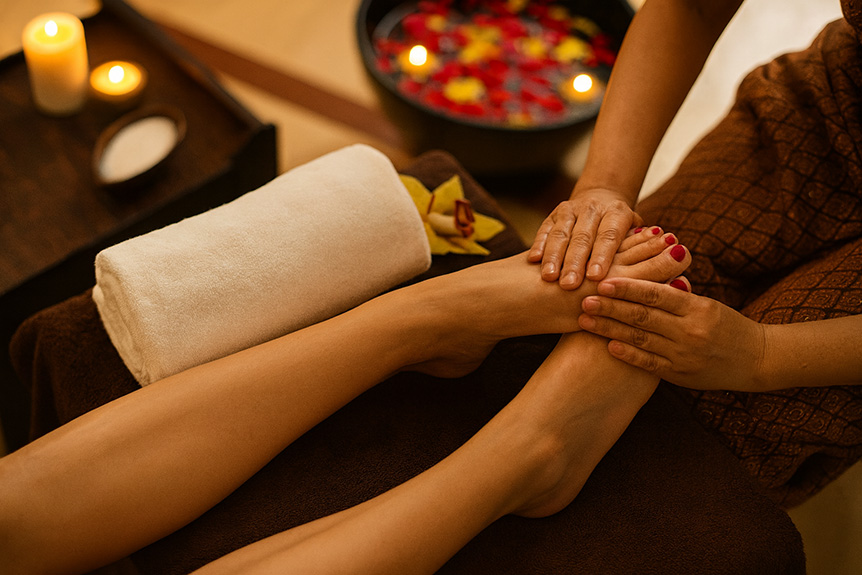
A diverse range of clients at Spa & Massage report experiencing notable benefits following sessions. Frequently cited effects include reduction in perceived stress, enhancement of relaxation response, and improvement in subjective well-being. Many clients describe diminished muscular tension and a sense of lightness in the extremities. Some individuals note improved sleep quality and a calmer mood post-session, which may reflect modulation of autonomic nervous system activity. Reports of alleviated headaches, reduced discomfort from chronic conditions, and heightened energy levels are also common. While clinical evidence varies, these client-reported outcomes are consistent with the relaxing, supportive environment cultivated at Spa & Massage. Such feedback underscores its potential to promote physical and psychological comfort, aligning with the clinic’s holistic approach to wellness and care.
What to Expect During a Session
Many clients entering a session at Spa & Massage can anticipate a structured, methodical process designed to optimise relaxation and comfort. Upon arrival, practitioners conduct an initial assessment, taking into account health history, specific concerns, and wellness objectives. During the session, clients are positioned comfortably as the practitioner applies targeted pressure to specific points on the feet, hands, or ears—areas believed to correspond to different organ systems. Techniques are precise, utilising thumb and finger walking, gentle kneading, and intermittent pressure, always tailored to individual sensitivity and feedback. The environment is kept tranquil, with dim lighting and calming ambient sounds to foster a sense of intimacy and safety. Post-session, therapists may provide self-care advice to prolong the perceived therapeutic effects.
Comparing It to Other Massage Therapies
How does it differ from other massage therapies regarding technique and intended outcomes? It primarily targets specific reflex points on the feet, hands, or ears, believed to correspond with organ systems throughout the body. Unlike deep tissue or sports massage, which focus on muscular tension and myofascial release, it aims to stimulate neural pathways and promote systemic balance. At Spa & Massage clinics, therapists employ precise thumb and finger pressure, in contrast to the gliding, kneading, or percussive motions used in Swedish or deep tissue techniques. The intended outcome of it is holistic well-being, supporting relaxation, stress reduction, and potential enhancement of physiological function. In comparison, other massage modalities often prioritize musculoskeletal relief, injury recovery, or improved circulation, reflecting distinct therapeutic philosophies and client goals.
Tips for Maximising Your Experience
Ideal outcomes from it are achieved when clients approach sessions with intentional preparation and informed aftercare. Evidence suggests that best therapeutic effects arise from adequate hydration prior to treatment, which facilitates lymphatic and circulatory engagement. At Spa & Massage, therapists recommend clients communicate openly about health history and specific areas of tension, allowing for targeted application of pressure to reflex zones. Post-session, practitioners advise a period of rest to promote parasympathetic activity, supporting relaxation and integration of physiological benefits. Avoiding stimulants, such as caffeine, enhances the body’s receptivity to the therapy’s subtle effects. Regular scheduling—rather than sporadic visits—maximizes cumulative outcomes. Personalised guidance, as practiced in Spa & Massage clinics, ensures that individual needs and preferences are fully addressed, fostering deeper therapeutic connection.
Conclusion
Like a map guiding travellers through uncharted terrain, this practice maps the body’s well-being onto the feet, hands, and ears. While empirical evidence remains mixed, client testimonials and clinical observation at Spa & Massage suggest potential benefits in relaxation and pain management. It stands as both compass and comfort—offering direction for those seeking holistic care, yet reminding us that scientific validation is an ongoing journey, not a destination. Its true value may lie in the intersection of experience and evolving research.
